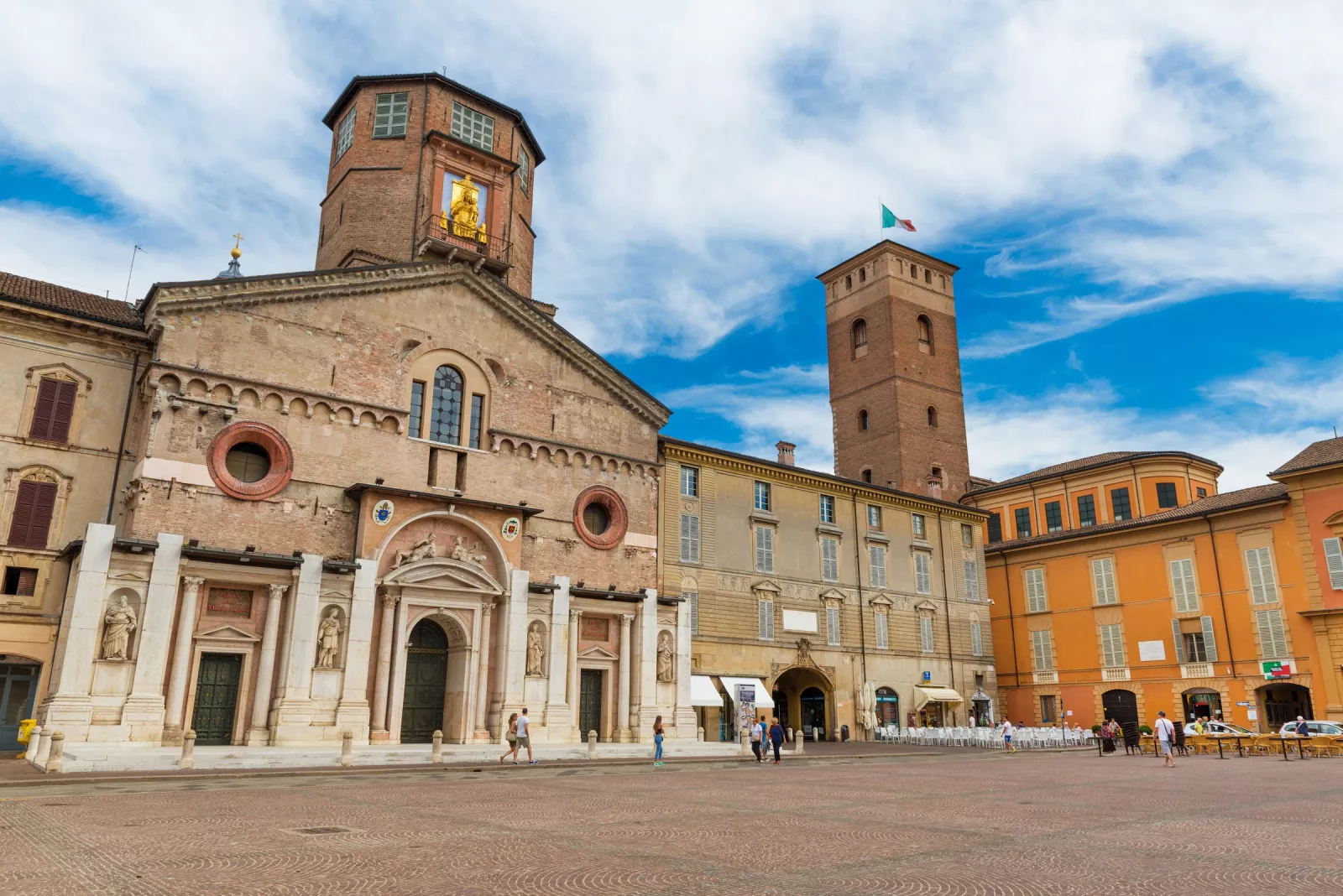Are you moving to Reggio Emilia and looking for support? Click here!
Located between Parma and Modena, and about 50 km from Bologna, Reggio Emilia is known as the City of the Tricolor as the Italian flag, inspired by the flags of the Cispadana Republic, was created and exhibited for the first time here on January 7, 1797. Reggio Emilia is a city that is comfortable to live in and is considered as one of the most prosperous and livable cities in Italy.
It is home to the University of Modena and Reggio Emilia, an institution founded in 1175, and numerous industrial research laboratories. Here are the departments of Communication and Economics, Education and Human Sciences, Life Sciences and Science and Engineering Methods. Additionally, there are university residences in the city center.
The historic city center is shaped like an elongated hexagon and the urban configuration of the squares in the heart of the city is particularly interesting (Piazza Prampolini, Piazza San Prospero, Piazza Casotti, Piazza Fontanesi), where it is possible to find cultural initiatives and opportunities for fun and leisure.
The main sectors of its economy belong to the following areas of specialization: agriculture and livestock which are flourishing especially in the pork and dairy sector (for the production of the typical Parmigiano Reggiano cheese, regulated by the homonymous Consortium which is based in city), the wine sector (Lambrusco Reggiano) and the fruit and vegetables sector. Moreover, the mechanical, mechatronic, ceramic, electronic, design and green economy sectors are particularly developed. The presence of infrastructures aimed at supporting businesses makes it a leader in the sectors of innovation, research and technology.

Teatro municipale Romolo Valli di Reggio Emilia
In the city there are numerous museums and art venues that promote initiatives and events that enrich the cultural activity of the territory throughout the year. Furthermore, temporary exhibitions are often set up, from Palazzo Magnani to the Palace of the Museums, from the Spazio Gerra to the numerous art galleries in the historic center.
The city of Reggio Emilia is also characterized by signs of contemporaneity, such as the installations by international artists which include the ponti (bridges) and the Alta Velocità Station (high speed train station) designed by the Spanish architect Santiago Calatrava. Today, the bridges make up the new city gates: three large white arches, architectural works to be observed in movement even from the highway and to which the Mediopadana high speed station was added to the landscape in 2013. The station represents an exchange hub for almost two million potential users from the vast area of "Western Emilia-Southern Lombardy".
Today known for its gastronomy, it is internationally renowned for the Reggio Emilia Approach, a pedagogical teaching method that has made the preschools in Reggio Emilia famous all over the world.

Stazione ferroviaria Reggio Emilia
Outside the city, towards the south, lie the estates that in the Middle Ages belonged to Countess Matilda of Canossa. The Reggio Emilia territory still preserves castles, fortresses and towers from that era, along with contemporary villages and parish churches.
The area of the Reggio Emilia airport, Campovolo, was made famous by the concerts of Luciano Ligabue: the territory, due to its location and extension (over 195 hectares), is the ideal arena for big events.
For more information:



